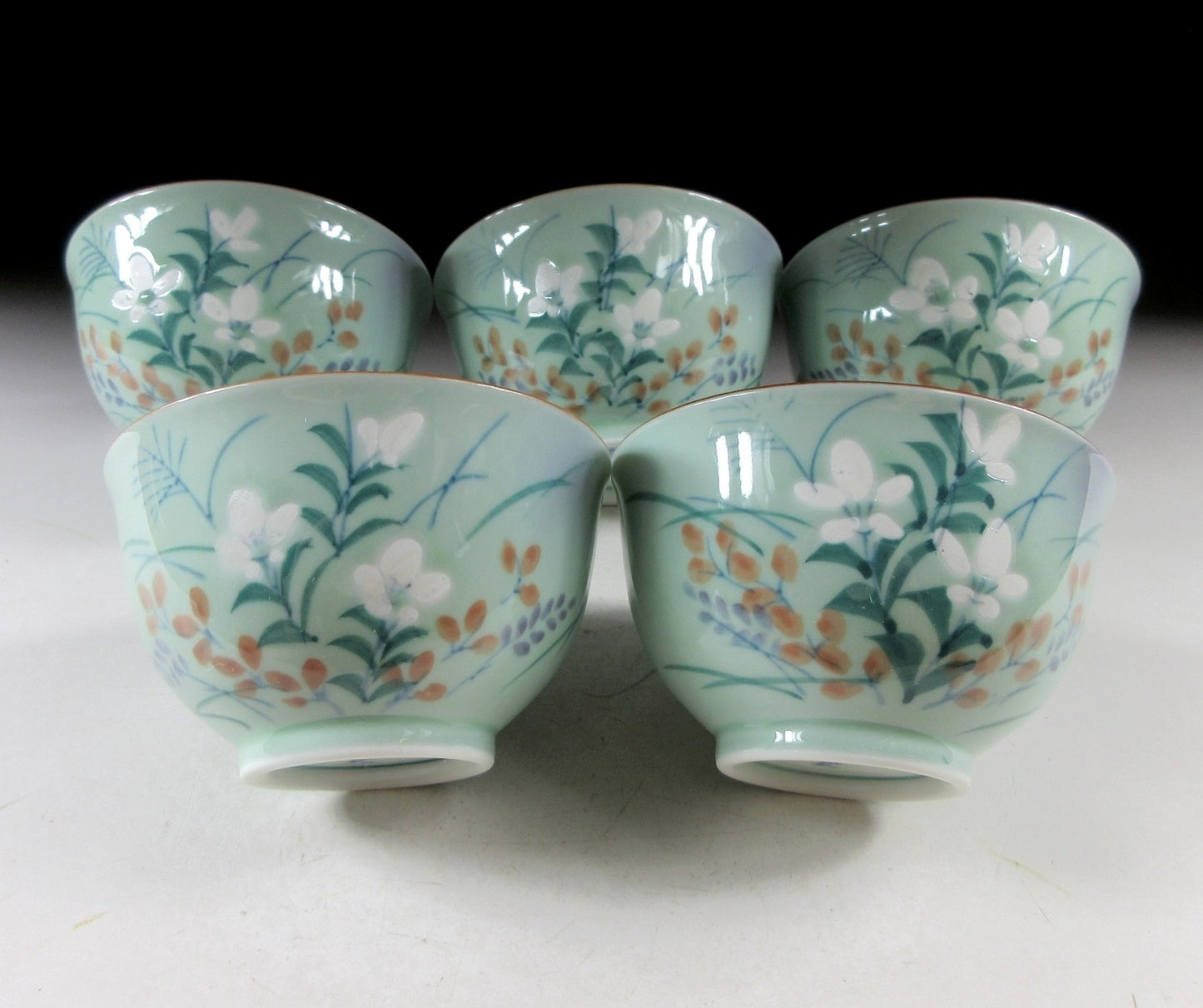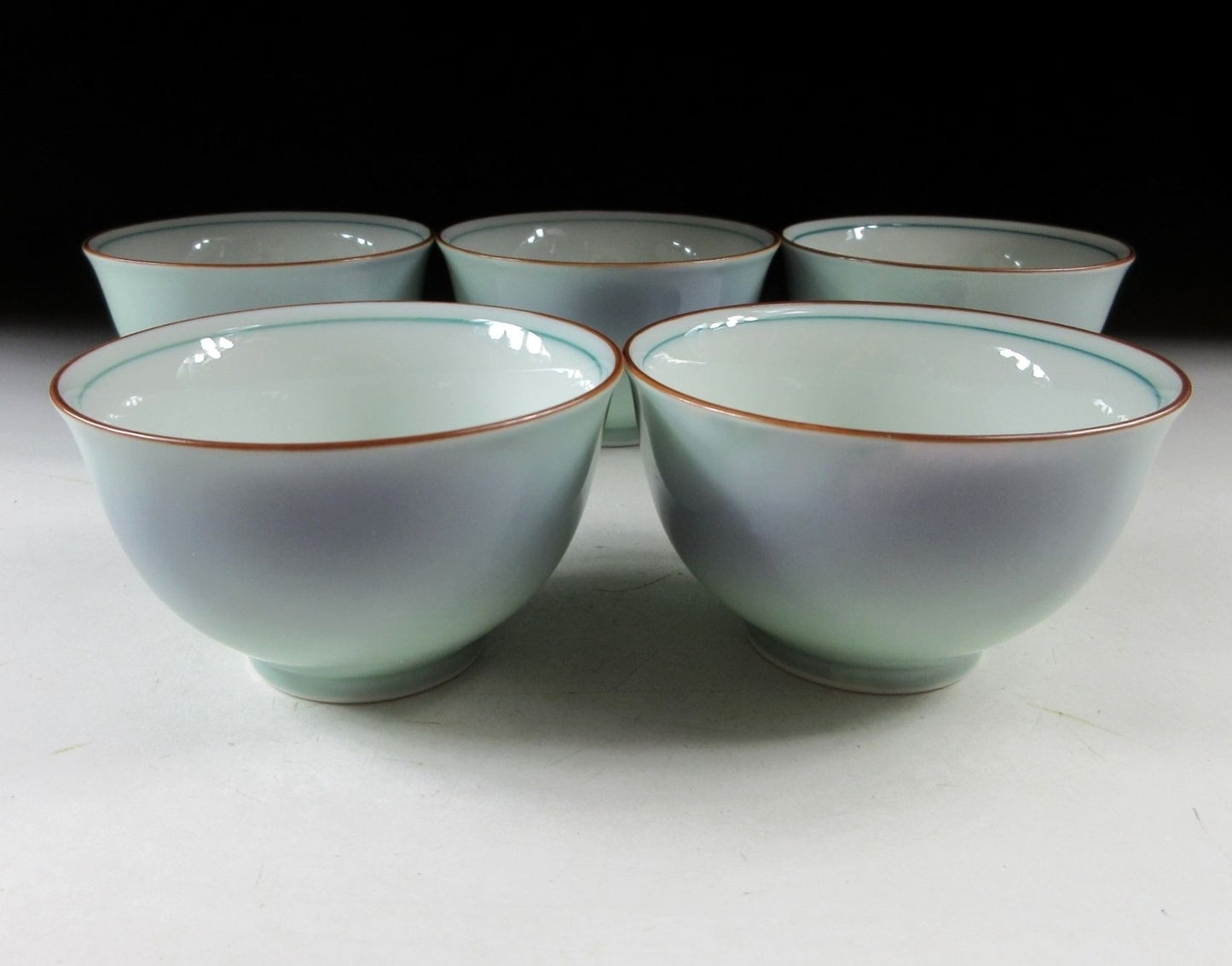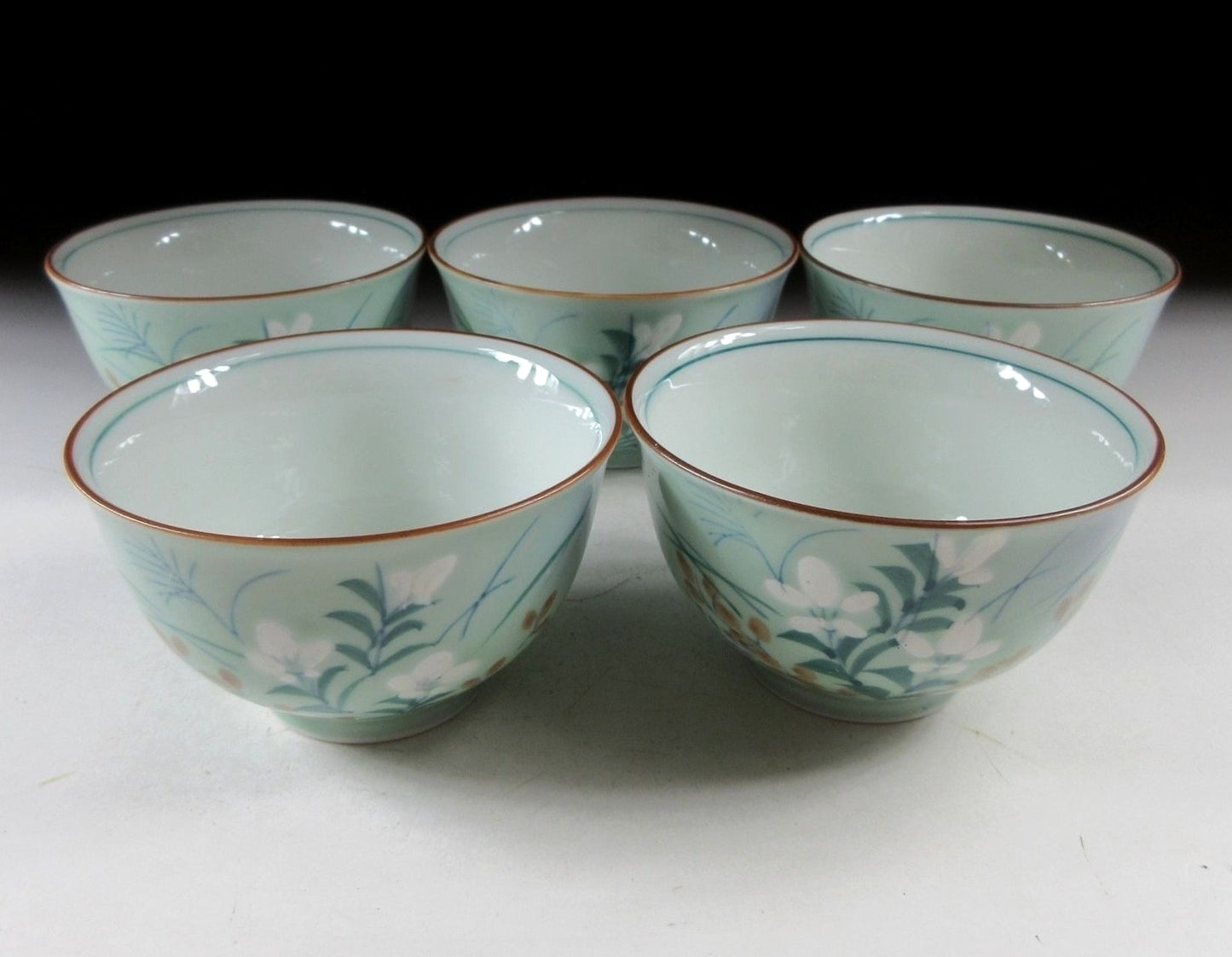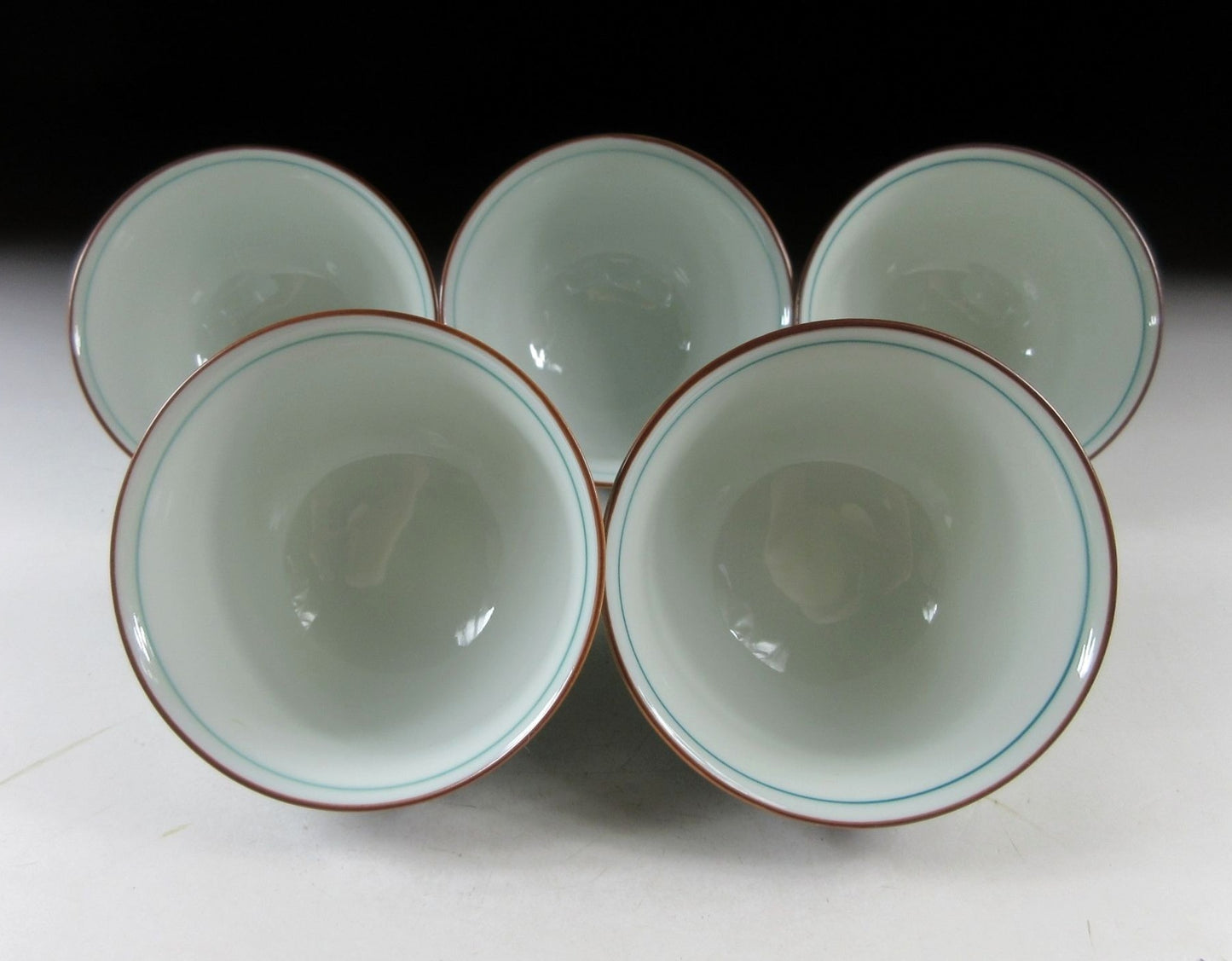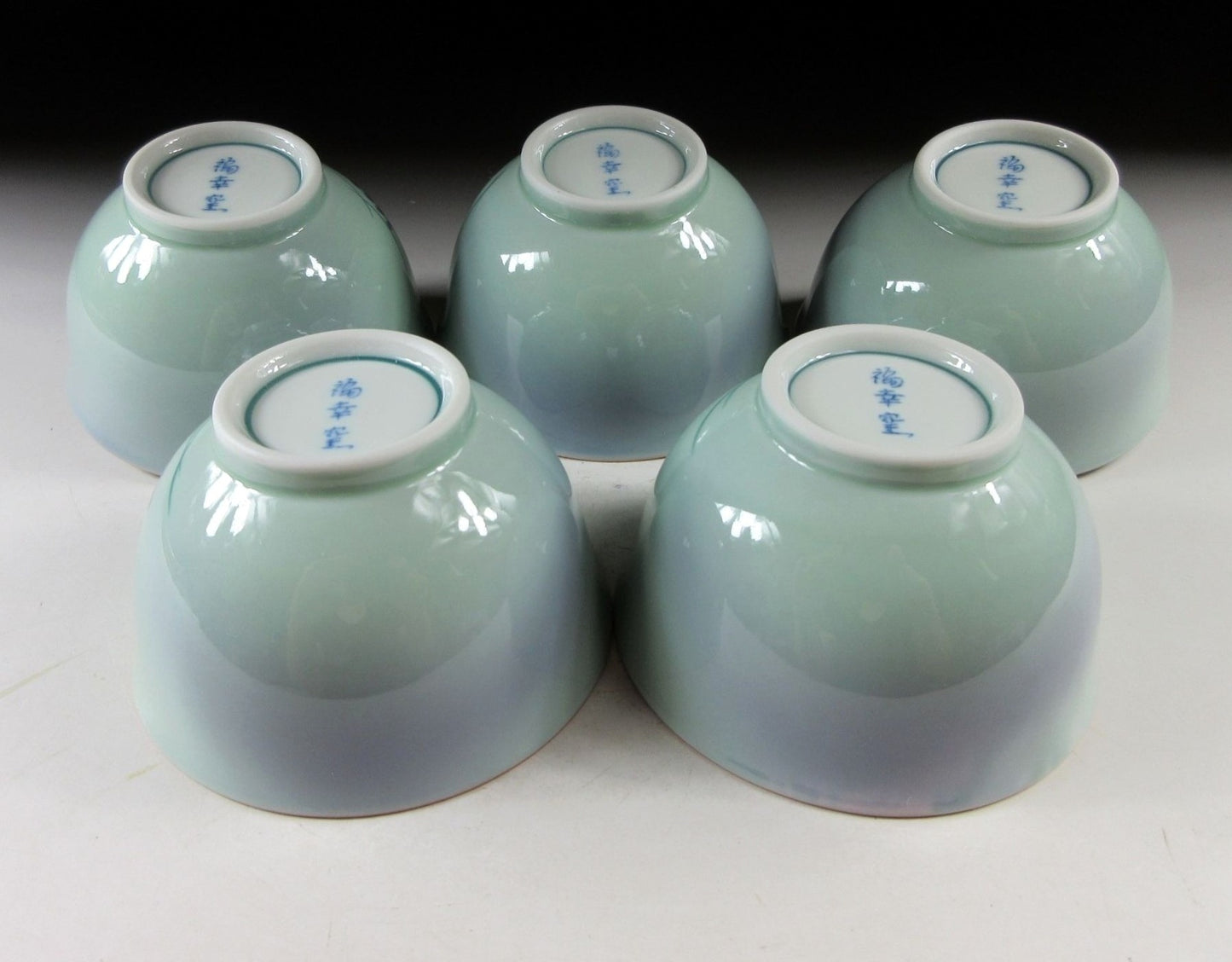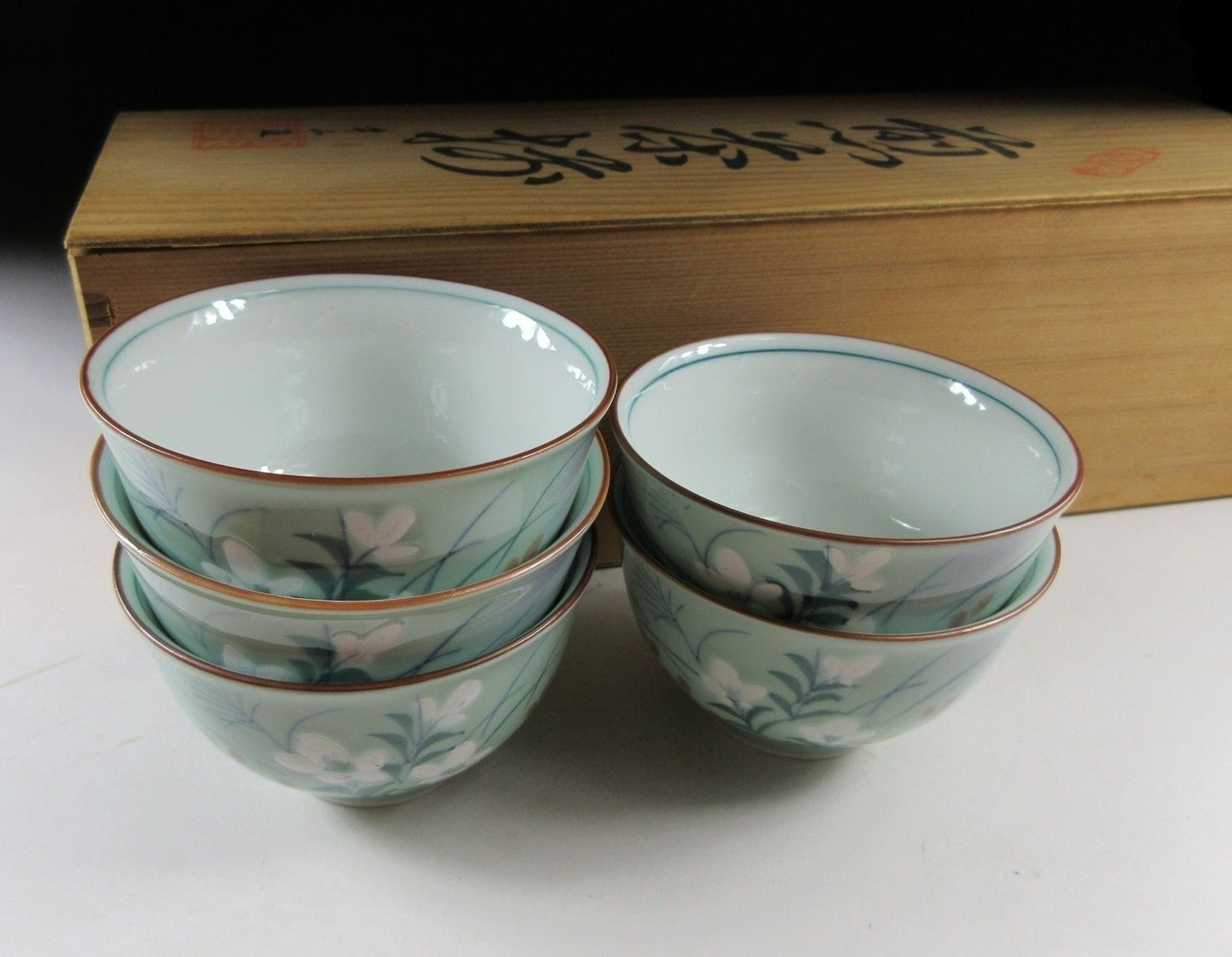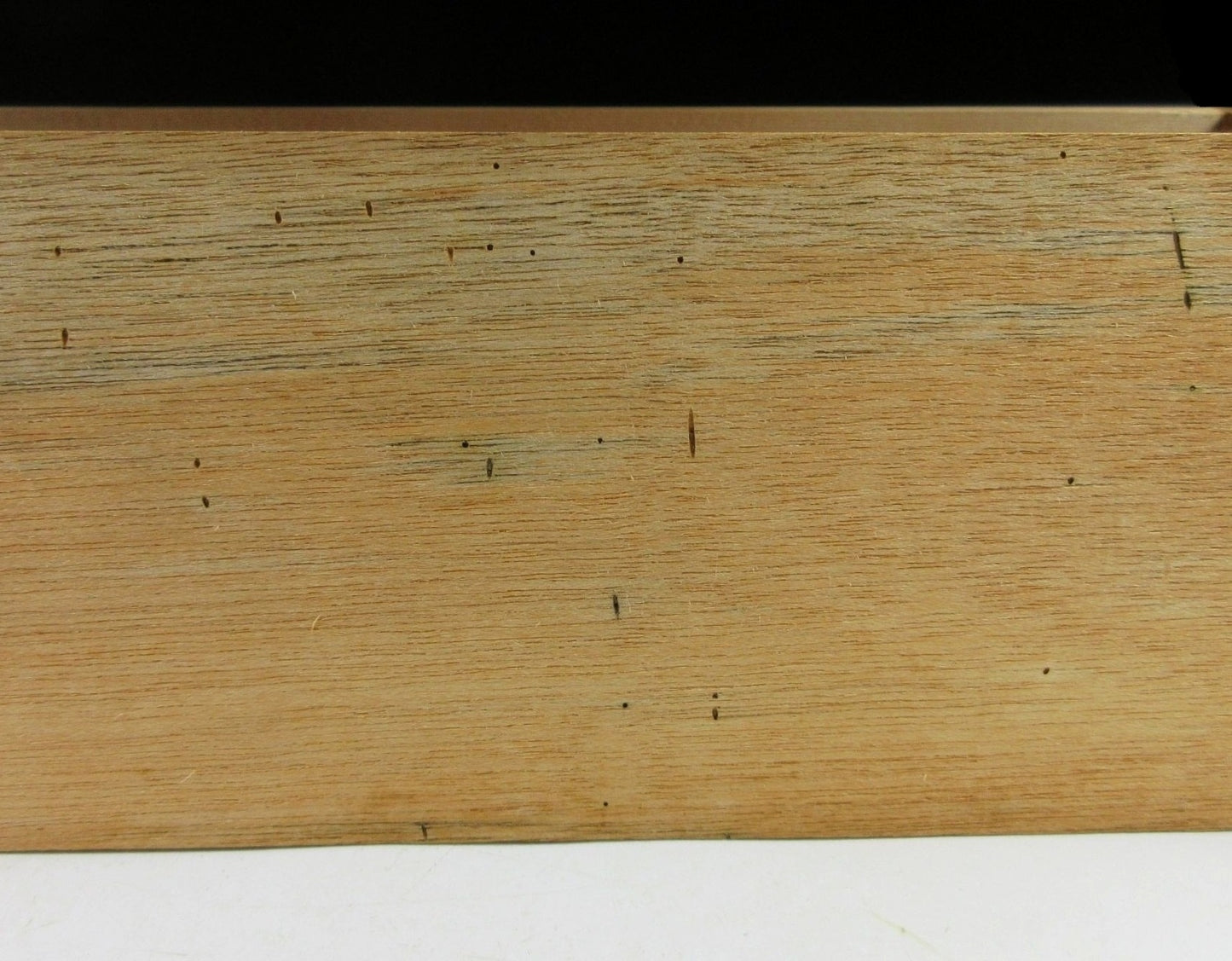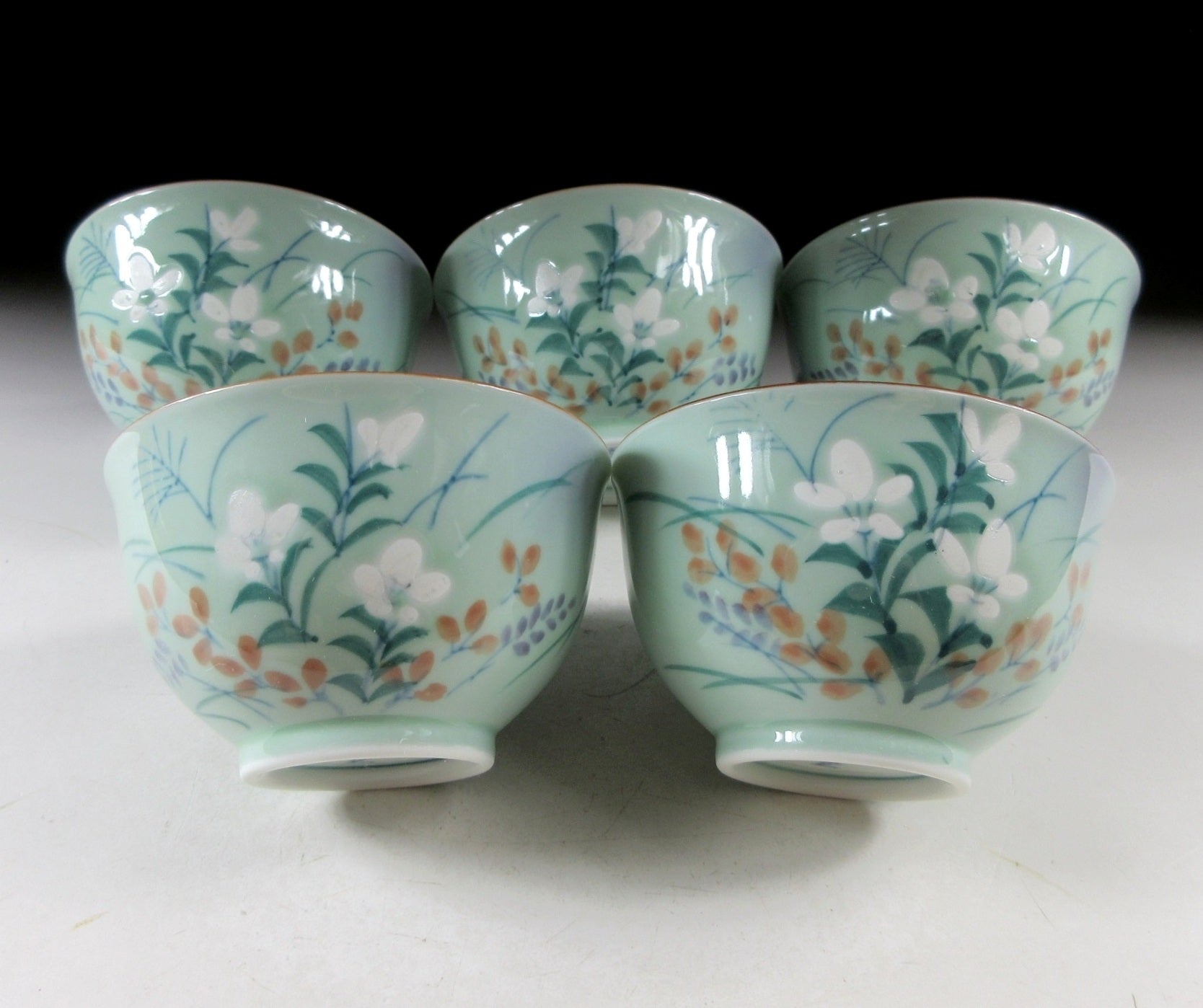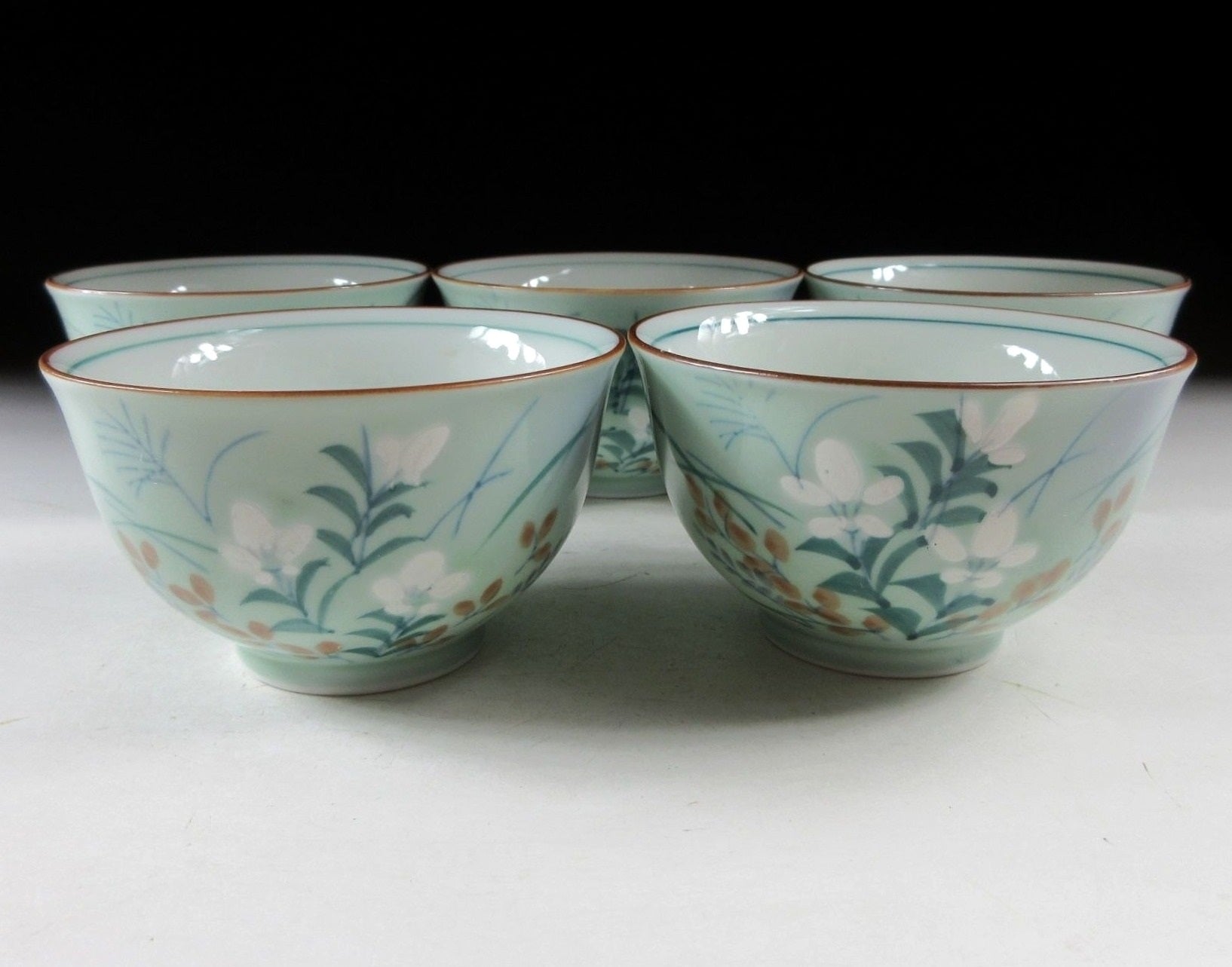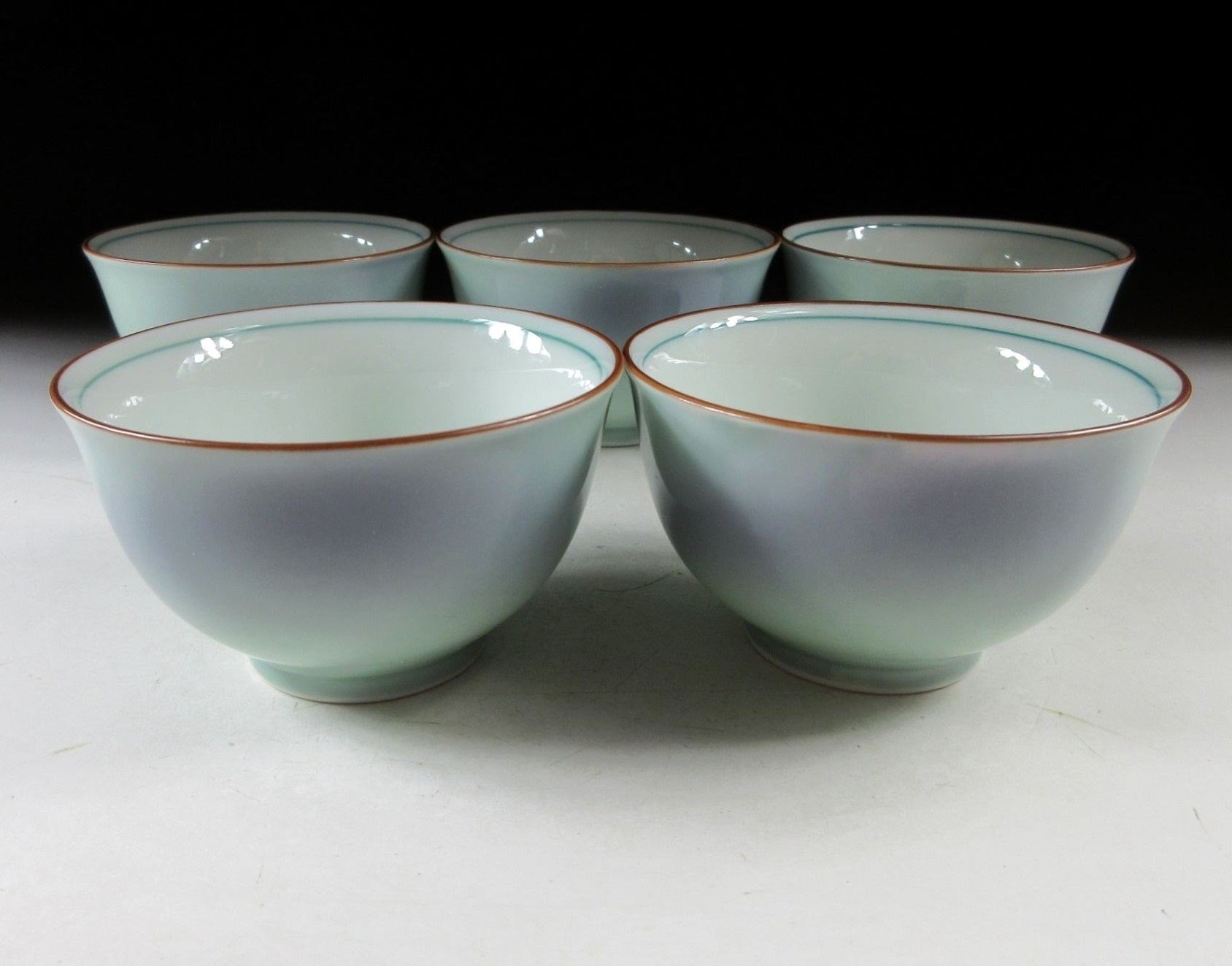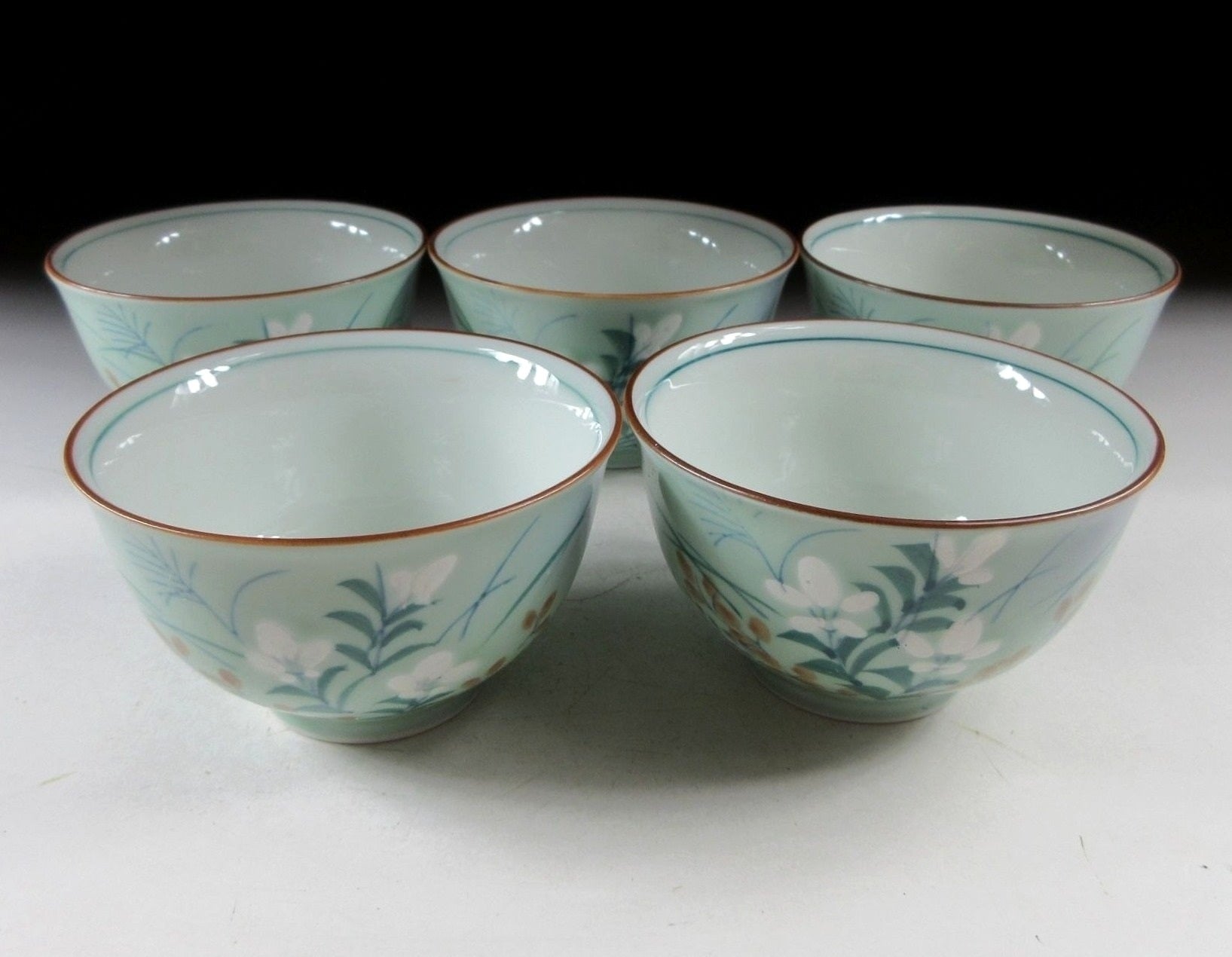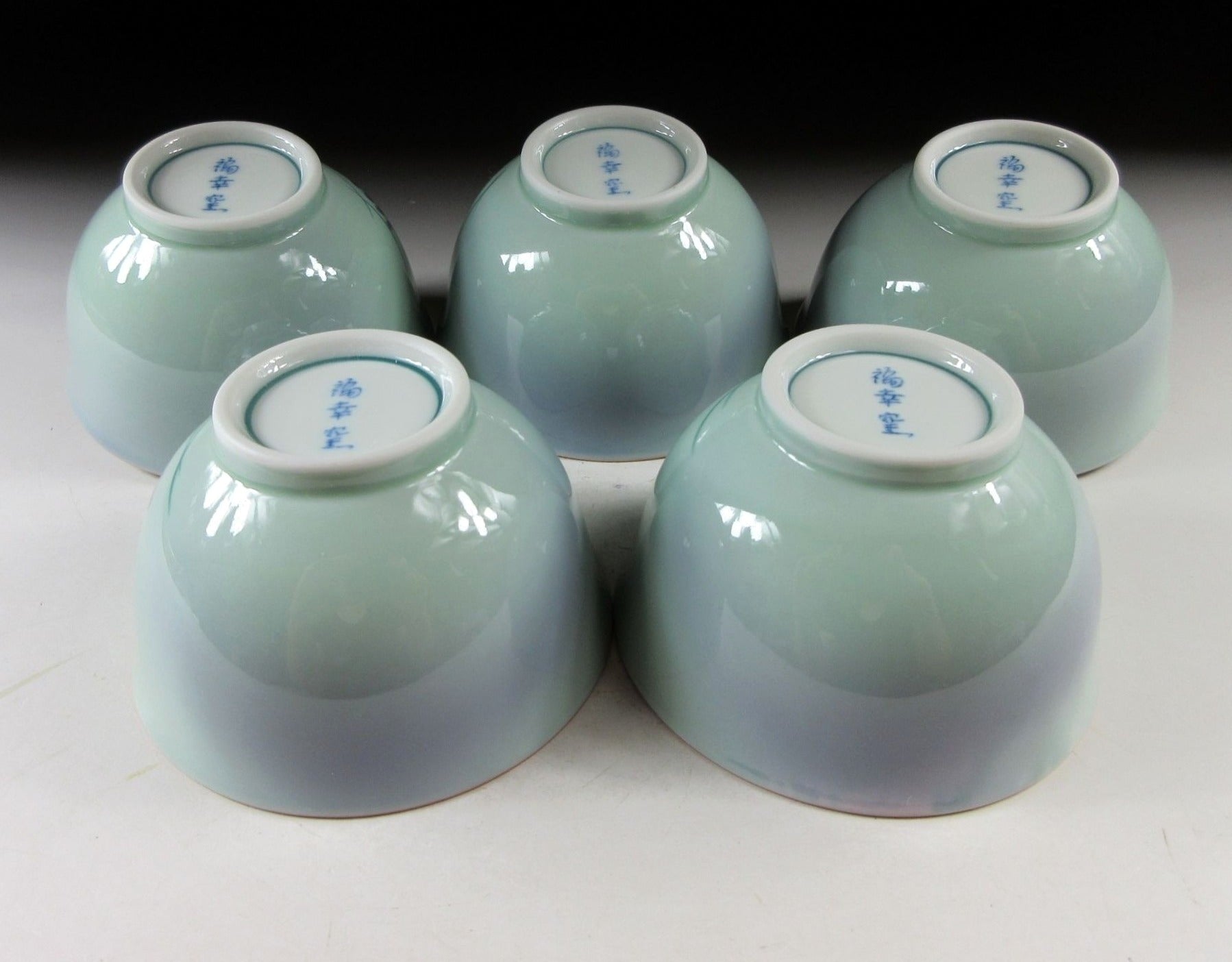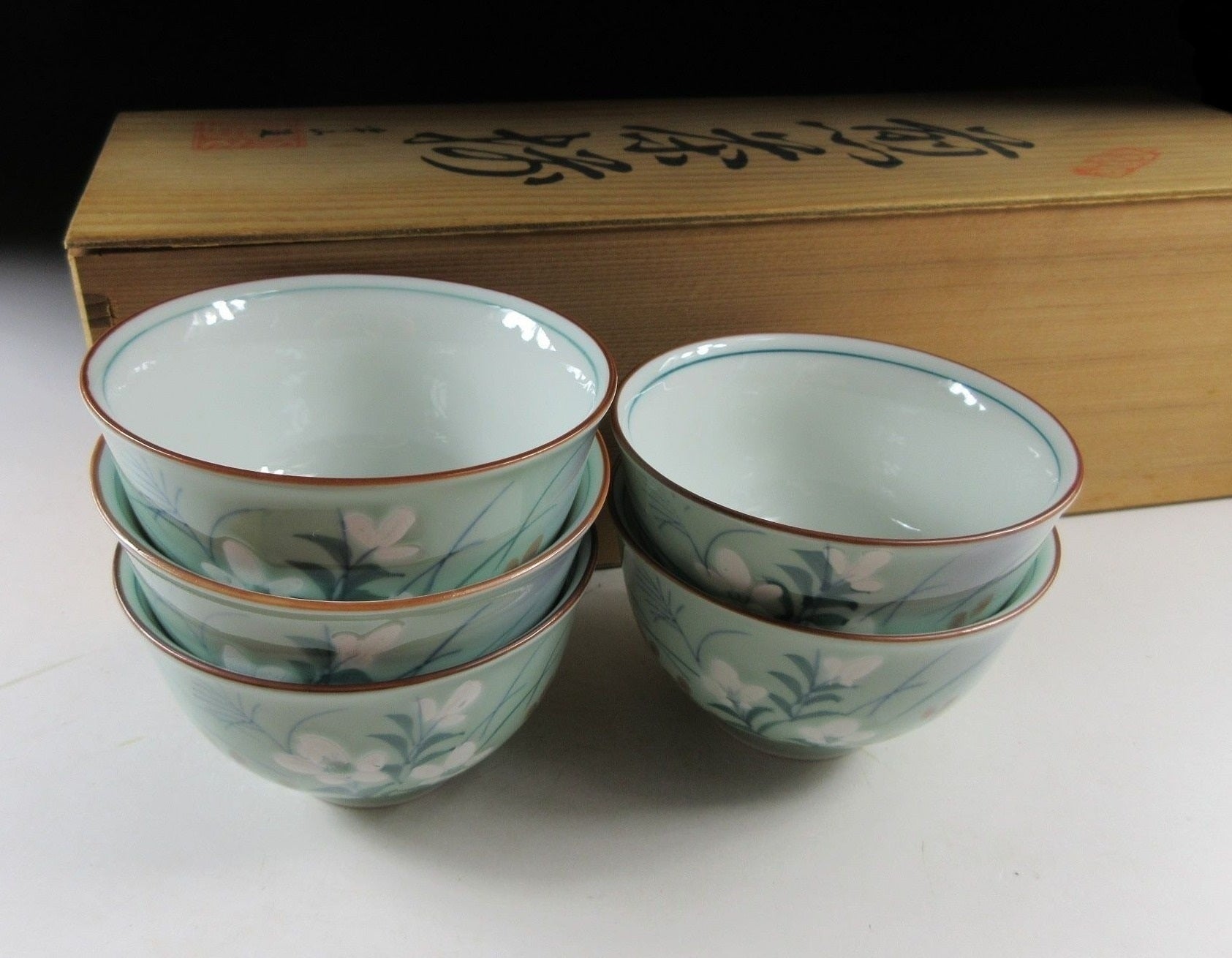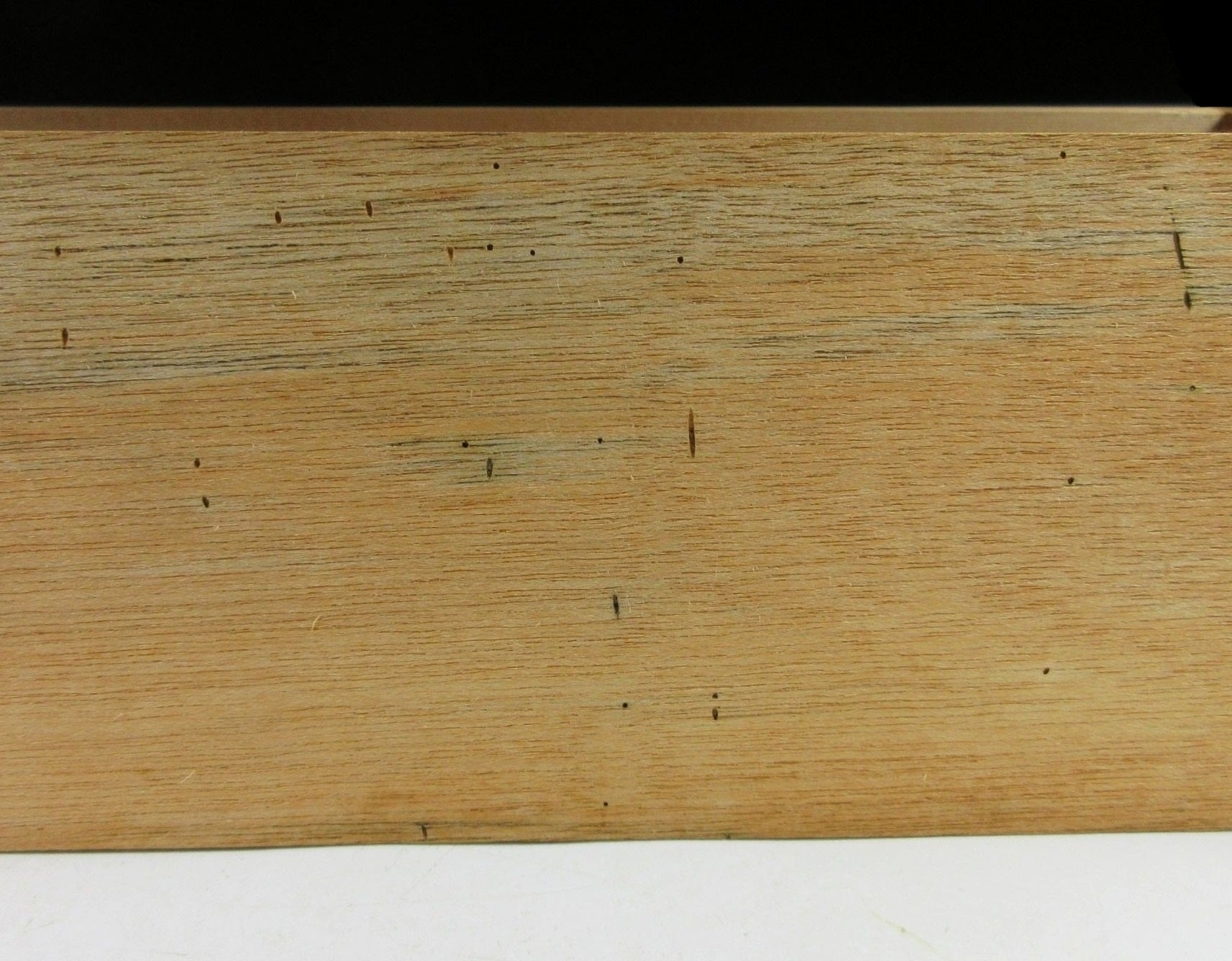Kominka Zakka
Fukko Gama Autumn Flower Cups
Fukko Gama Autumn Flower Cups
Couldn't load pickup availability
*SHIPPING OPTIONS VARY DEPENDING ON THE DESTINATION, PLEASE SCROLL TO THE END OF THIS LISTING FOR MORE DETAILS.
This listing is for a set of five Arita-ware tea cups made around 30 years ago by Fukko Gama. They are made of wheel-thrown porcelain and are decorated with white bellflowers, pampas grass and bush clover. Each of these plants has the honour of being one of the seven flowers of autumn. The seven flowers of autumn are bush clover, pampas grass, kudzu, dianthus, golden lace, hemp agrimony, and the Japanese bellflower. These seasonal favourites have been popular since the latter half of the eighth century after a collection of waka poems known as Manyo-shu was compiled by a poet named Yamanoue-no-Okura. Since then these flowers have been frequently portrayed in paintings, poetry, literature, pottery, lacquerware, carvings and textiles. These cups are intended for serving sencha, and are suitable for daily use. The signature of the potter can be found on the bottom of each cup, and they come with their original signed wooden storage box.
Fukko Gama is a Hasami and Arita-ware kiln located in Hasami town, Nagasaki Prefecture. It was established during the Edo period and was originally located in Omura city. In 1926 the 8th generation, Takejiro Fukushige, relocated Fukko Ceramics Factory (also known as Kozan Toen) to the Nishinohara district in Hasami town. The new site consisted of an office, ceramic production area, a brushwork decorating and glazing area, and a large noborigama climbing kiln. At its peak around 160 workers were involved in various stages of production. Fukko Gama also produced many handmade goods for neighbouring Arita town. In 2001 the 10th generation master closed Fukko Gama, eleven years later in 2012 the site was formally registered as Tangible Cultural Property by the Japanese Government. **Fellow sellers, this information was researched by Kominka Zakka and CANNOT be used in your own listings.
Arita-ware refers to porcelain produced in the town of Arita in the southern island of Kyushu. In 1616 a Korean potter named Ri Sanpei discovered kaolin at Mt. Izumiyama, thus resulting in the birth of Japanese porcelain. Arita-ware is sometimes referred to as Imari-ware, and this is because export wares were shipped from the nearby port in Imari town. Edo period Arita-ware is generally classified into three groups; Ko-Imari (Early Imari), Kinrande (gold painted porcelain), and Kakiemon (elegant motifs of birds, animals and flowers). Another special, high quality porcelain known as Nabeshima (featuring woven/textile patterns) was also produced and given as gifts to the Imperial court and ruling class. To this day Arita remains at the centre of porcelain production in Japan.
Sizes
Box: H.9.6cm (3.7”) x 32.1cm (12.6”) x 10.4cm (4”)
Cups: H.5.1cm (2”) x Dia.8.9cm (3.5”)
Condition
The entire set is in very good condition with no chips or cracks, the underside of the lid however has some small borer holes.
THESE ARE SHIPPING ESTIMATES BASED ON THE CURRENT GLOBAL SITUATION
**Germany, France, Greece, Spain, Poland, Austria, Slovakia, Lithuania, Slovenia: NO SHIPPING. Very strict and expensive packaging laws in place and we are not licensed to send products to these countries. We have no plan to register at this time because the process is in some cases very expensive and complicated, plus each country has its own set of regulations and application process.
**USA, UK, Canada, Australia, New Zealand, Switzerland, Norway: Airmail Small Packet (approx. 15-28 days). Combined shipping available up to 2kgs for Airmail Small Packet (please send us a message).
**Asia: Airmail Small Packet (approx. 15-21 days). Combined shipping available up to 2kgs for Airmail Small Packet (please send us a message).
**Central Asia, Middle East, South Africa, Brazil, Mexico: EMS Express 10-15 days.
**Russia: No shipping methods available.
Share
